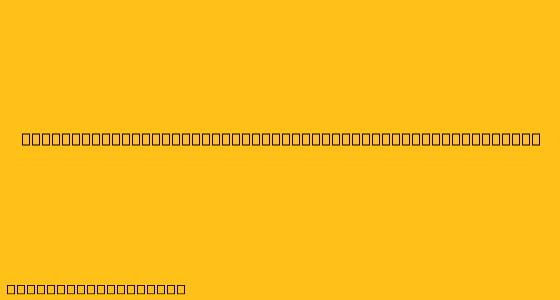Formal Letter Example and its Translation
A formal letter is a written communication used in professional and official settings. It follows a specific structure and tone, emphasizing clarity, professionalism, and formality.
Here's an example of a formal letter requesting information, along with its translation:
[Your Name] [Your Address] [Your Phone Number] [Your Email Address]
[Date]
[Recipient Name] [Recipient Title] [Recipient Organization] [Recipient Address]
Subject: Request for Information on [Topic]
Dear [Recipient Name],
I am writing to request information regarding [Topic]. I am currently [explain your reason for needing the information], and I believe that your organization's expertise in this area could be valuable to me.
Specifically, I would like to know more about [specific questions or areas of interest]. I would appreciate it if you could provide me with [specific type of information or resource].
Thank you for your time and consideration. I look forward to hearing from you soon.
Sincerely,
[Your Signature] [Your Typed Name]
Translation:
[Nama Anda] [Alamat Anda] [Nomor Telepon Anda] [Alamat Email Anda]
[Tanggal]
[Nama Penerima] [Jabatan Penerima] [Organisasi Penerima] [Alamat Penerima]
Perihal: Permintaan Informasi tentang [Topik]
Kepada [Nama Penerima],
Saya menulis untuk meminta informasi mengenai [Topik]. Saat ini saya sedang [jelaskan alasan Anda membutuhkan informasi tersebut], dan saya percaya bahwa keahlian organisasi Anda di bidang ini akan sangat bermanfaat bagi saya.
Secara khusus, saya ingin mengetahui lebih lanjut tentang [pertanyaan atau area minat tertentu]. Saya akan sangat berterima kasih jika Anda dapat memberikan saya [jenis informasi atau sumber tertentu].
Terima kasih atas waktu dan pertimbangan Anda. Saya berharap dapat mendengar dari Anda segera.
Hormat saya,
[Tanda Tangan Anda] [Nama Anda yang diketik]
Key Points to Remember:
- Use formal language: Avoid slang, contractions, and casual expressions.
- Be clear and concise: State your purpose directly and provide specific details.
- Maintain a professional tone: Be respectful and avoid being overly familiar.
- Proofread carefully: Ensure there are no grammatical errors or typos.
- Use a proper format: Follow the standard format for formal letters, including headings, salutation, closing, and signature.
- Consider the recipient: Tailor your language and tone to the specific audience.
By following these tips, you can write effective and professional formal letters that communicate your message clearly and effectively.
